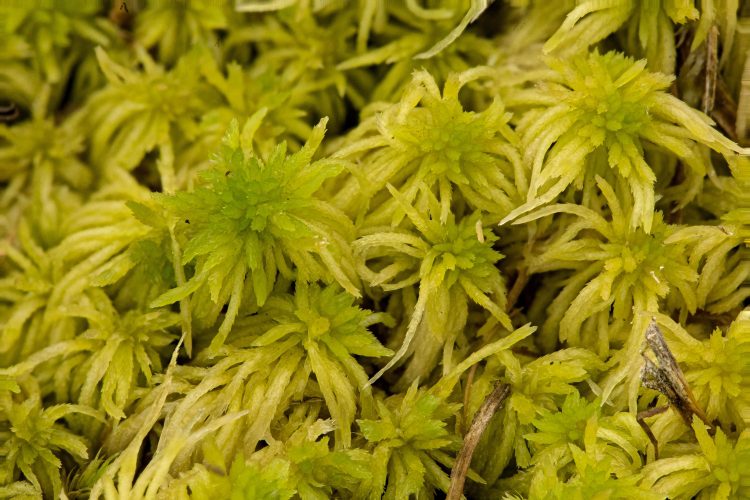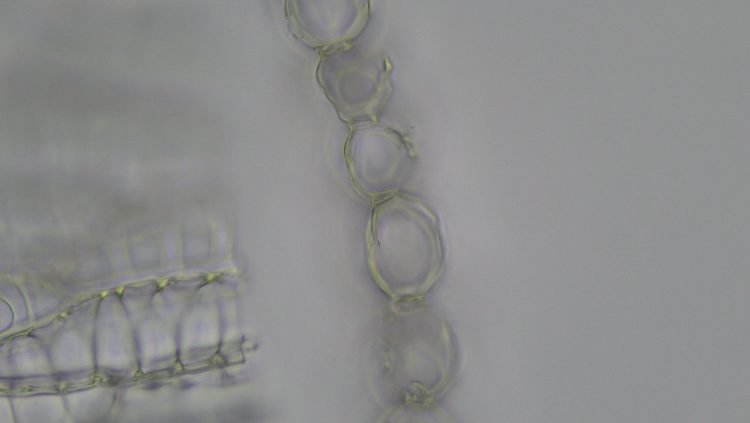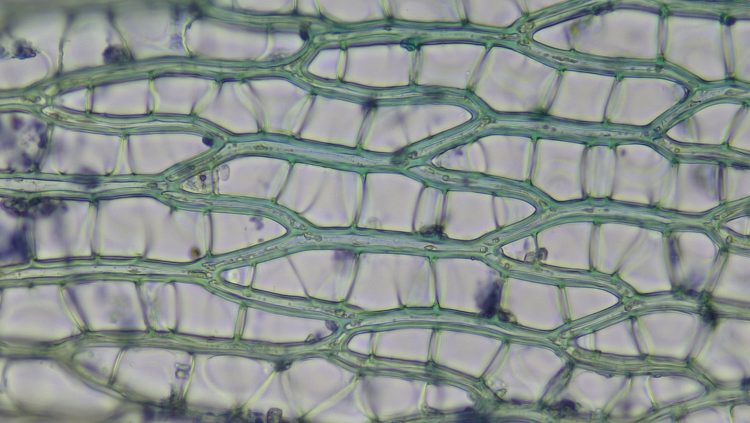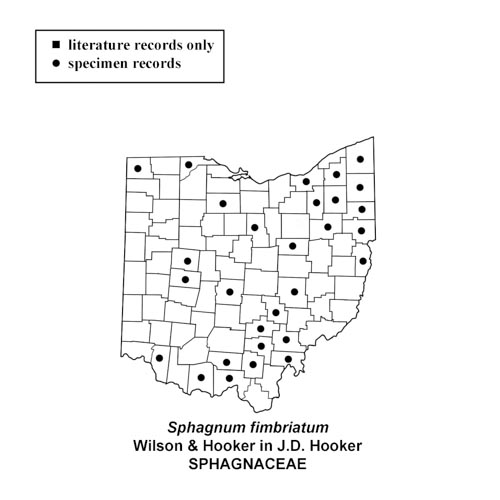Sphagnum fimbriatum

Sphagnum fimbriatum in swale in Delaware County, Ohio.

Sphagnum fimbriatum branch leaf cross-section.

Sphagnum fimbriatum branch leaf cells.

Sphagnum fimbriatum stem leaf (stained).
How to recognize Sphagnum fimbriatum: Sphagnum is recognizable as a genus because of its unique appearance. These mosses grow vertically, generally in a clump, carpet or hummock, with a round fuzzy pompon. This pompom or “capitulum” consists of a closely packed group of little beginning branches which will elongate as the stem grows upward. These branches will be clustered together in a single fascicle on the stem. In Sphagnum fimbriatum two branches diverge and spread outwards from the stem, while three others are pendant and are very close to the stem. The stem and branch leaves differ in shape, but both grow with long thin chlorophyllose cells separating larger hyaline cells with pores, which allows for easy entry of water. A compound microscope and dissection of leaves and stem and branches of the plants are needed to make Sphagnum identifications accurately. This species is found in section Acutifolia of Sphagnum, which has its trapezoidal green branch leaf cells slightly more exposed on the concave inner side of the branch leaves. This can be seen in the branch leaf section photo above. The stem and stem leaves are fan-shaped and lacerate across the apex and side of the leaf. The stem leaf of S. girgensohnii is lacerate only across the apex of the leaf. Both these species have a triangular area at the base of the leaf where the pores and fibrils of the hyaline cells have been resorbed after growth; but the stem leaf cells of S. fimbriatum are 1-3 divided while S. girgensohnii cells are not divided. S. fimbriatum has a pale conspicuous apical bud in the center of the capitulum, although it is not apparent in the picture above. S. lindbergii is not found in Ohio, but also has a stem leaf which is lacerate at the apex, but it belongs to section Cuspidata in Sphagnum since its trapezoidal green leaf cells are more exposed on the outer convex side of the branch leaf.
Where to find Sphagnum fimbriatum: This species is found in minerotrophic habitats where the water comes from streams or springs and has run over rocks. It is often found in swampy forests or in bogs next to bog shrubs where it is drier.

